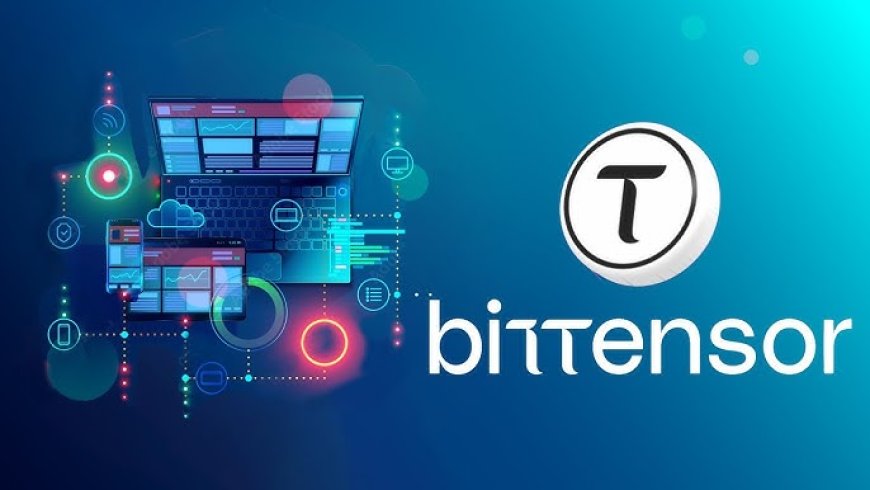BitTensor Restitution Efforts After July 2nd Attack: A Community-Driven Recovery Initiative
In the aftermath of the BitTensor network attack on July 2nd, 2023, the cryptocurrency community has demonstrated remarkable resilience. Since then, OpenTensor and the broader BitTensor ecosystem have made considerable progress in securing the network, recovering lost assets, and initiating a fair restitution process for those affected.

Introduction
In the aftermath of the BitTensor network attack on July 2nd, 2023, the cryptocurrency community has demonstrated remarkable resilience. Since then, OpenTensor and the broader BitTensor ecosystem have made considerable progress in securing the network, recovering lost assets, and initiating a fair restitution process for those affected. This attack shook the community, but the subsequent response has highlighted the strength and unity of the contributors, developers, and organizations involved. In this article, we will delve into the steps taken to secure the network, recover assets, and restitute the affected individuals, as well as the technological improvements made to enhance BitTensor’s decentralized nature.
Securing the BitTensor Network: Key Milestones
In response to the July 2nd attack, OpenTensor quickly sprang into action, prioritizing the security of the BitTensor network. One of the most significant updates is the implementation of Ledger support, which will soon be available on both the testnet and mainnet. This development is crucial for making BitTensor one of the most secure cryptocurrency technologies available.
In addition to Ledger support, the team has introduced several key technical improvements:
- Child keys and hot/cold key swap mechanisms: These features aim to strengthen the security of individual wallets within the network.
- Chain bloat reduction: This enhancement reduces unnecessary data on the blockchain, making the network more efficient.
- Delegates.json removal: Moving away from this system adds another layer of decentralization to the network.
Moreover, sub-repositories are being created to break apart different aspects of the BitTensor API. This modular approach enhances security, flexibility, and allows multiple teams to contribute to the ecosystem, ensuring that BitTensor remains highly decentralized and secure.
Clawback Operations: Recovering Lost Assets
One of the primary concerns after the attack was the recovery of stolen tokens. OpenTensor has collaborated with various agencies, including the Secret Service, FBI, and crypto investigation firms, to track and recover lost funds. The team has secured verbal agreements for the return of 33% of the stolen tokens, and over 50% of the funds held on major exchanges like MEXC and KuCoin are currently in the process of being recovered.
While the recovery process is complex and involves various legal intricacies, OpenTensor is working hard to expedite the return of these assets to the rightful owners. The team is committed to handling this recovery as swiftly as possible, with a focus on transparency and fairness throughout the process.
Restitution Plans: A Community-Driven Effort
In addition to securing the network and recovering funds, OpenTensor has been working on a restitution plan for those affected by the attack. The good news is that five organizations have stepped up to contribute to the restitution effort, along with anonymous donors. OpenTensor itself is committing significant resources to ensure that the restitution process is handled fairly and efficiently.
Although the process is complex, the early signs are promising. OpenTensor is taking a cautious approach to ensure that the restitution is done correctly, and the team believes they have the necessary resources to meaningfully compensate those impacted by the attack.
One of the key goals is to avoid the need for a chain fork, unlike previous large-scale cryptocurrency hacks like Mt. Gox and the Ethereum DAO incident. Instead, OpenTensor is focusing on launching an on-chain restitution mechanism that allows the community to actively participate in the recovery effort. This decentralized approach not only strengthens the integrity of the restitution process but also fosters a sense of community ownership and responsibility.

Technological Advancements and Decentralization
The July 2nd attack prompted OpenTensor and the BitTensor community to rethink some aspects of the network’s security and structure. One of the most important changes involves breaking down parts of the BitTensor API into sub-repositories. This modular approach allows for greater security, flexibility, and decentralization, as it enables more teams and developers to work on different components of the network independently.
Another significant improvement is the focus on cold key security. Cold keys play a critical role in securing assets and managing operations on subnets, validator slots, and senate seats within the network. OpenTensor is exploring several solutions to ensure that cold key swaps are secure and that the community has ample time to respond to any potential threats.
To further enhance security, OpenTensor is considering implementing a bot that notifies the community when a cold key swap is scheduled. Additionally, the team is looking into using proxy mechanisms to protect cold key operations, which will add another layer of security to the network.
The Importance of Community Collaboration
One of the most striking aspects of BitTensor’s recovery efforts is the role of the community in driving the restitution process. The ecosystem’s strength lies in the shared efforts of its contributors, builders, and developers. As one contributor mentioned during a recent community call, “We fail as individuals, but we succeed as a team.” This sentiment underscores the importance of collective action in securing the network and recovering from the attack.
The restitution process is not just about compensating those affected; it is about ensuring the long-term viability of the BitTensor ecosystem. Many of the individuals impacted by the attack are key builders and holders who have contributed significantly to the development of the network. Supporting them is not only an act of goodwill but also a smart investment in the future of BitTensor.
By rallying around the victims and ensuring that they are made whole again, the community is demonstrating its commitment to the integrity of the ecosystem. This collective effort will help BitTensor emerge stronger and more resilient than ever before.
Moving Forward: What’s Next for BitTensor?
As the community continues to recover from the attack, there are several key developments on the horizon for BitTensor:
- The launch of an on-chain restitution mechanism, which will allow the community to participate directly in the restitution process.
- Ongoing work with law enforcement and exchanges to recover lost funds and ensure that the restitution process proceeds smoothly.
- Continued technological improvements, including the rollout of Ledger support and the development of new security features like child keys and cold key proxies.
As OpenTensor works with organizations and individual contributors to gather the necessary resources for restitution, the community remains focused on strengthening the network and ensuring that the victims of the attack are compensated fairly.
Conclusion
The July 2nd attack on BitTensor was a significant challenge, but the community has responded with resilience and determination. Through a combination of technical improvements, asset recovery efforts, and a community-driven restitution plan, BitTensor is emerging stronger than ever. With the continued support of contributors, developers, and organizations, the network is well on its way to becoming one of the most secure and decentralized cryptocurrency ecosystems in existence. Together, the community is proving that even in the face of adversity, BitTensor can thrive and grow.
Source : @Opentensor Foundation
















